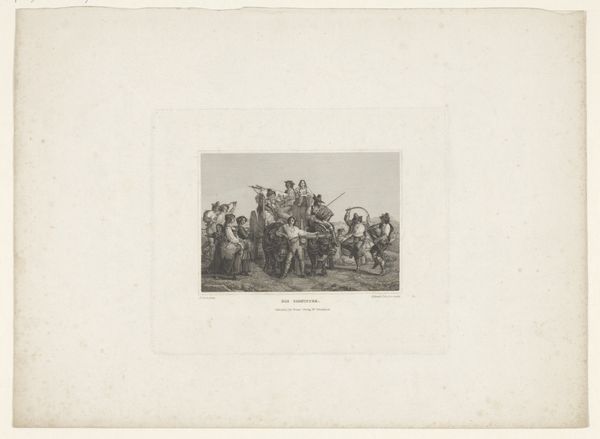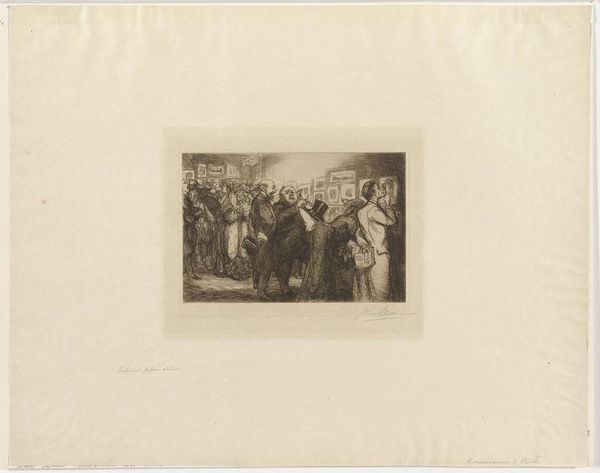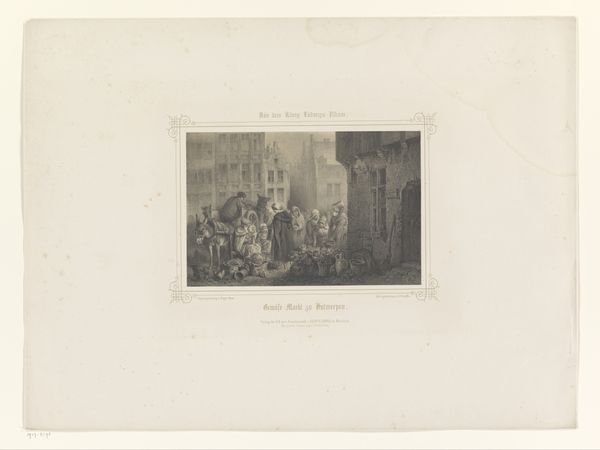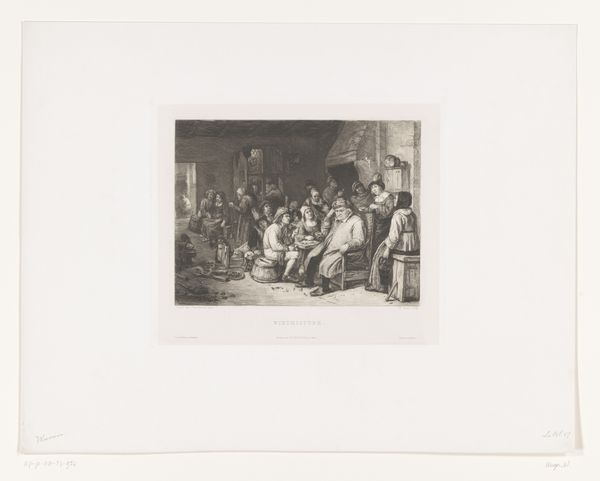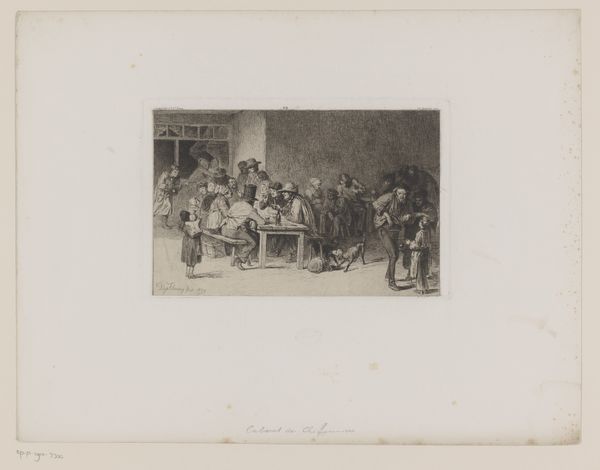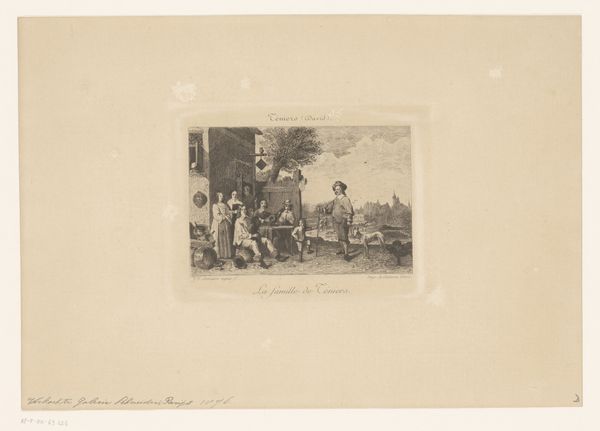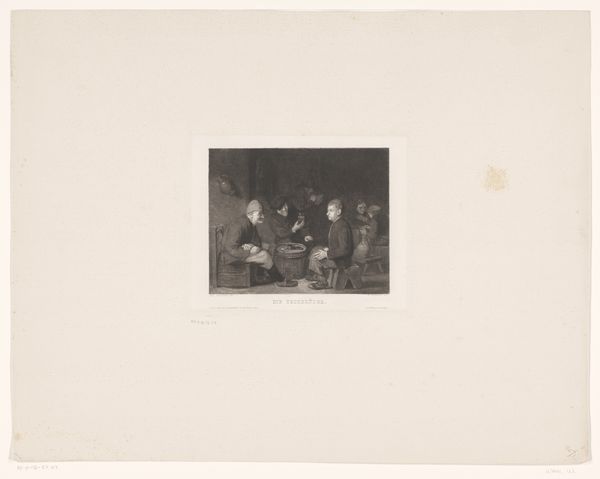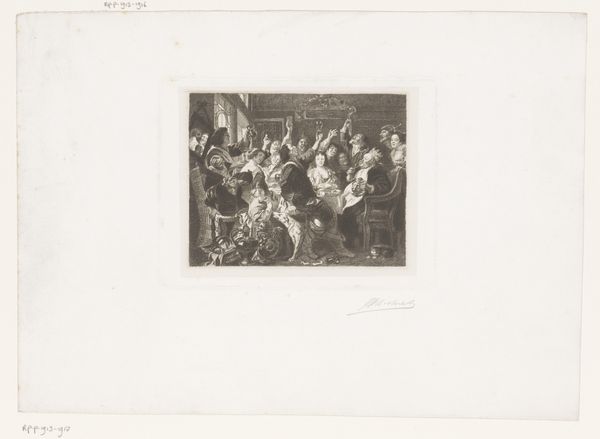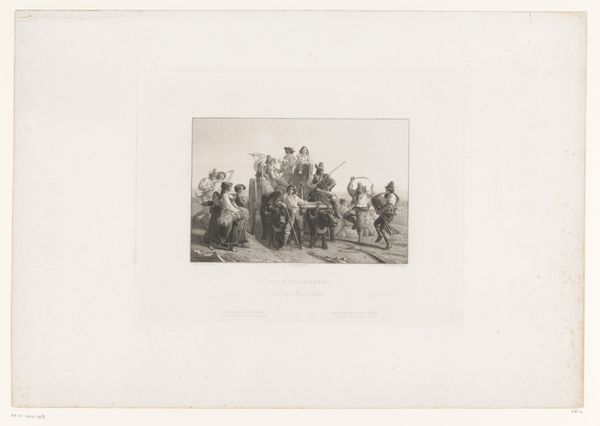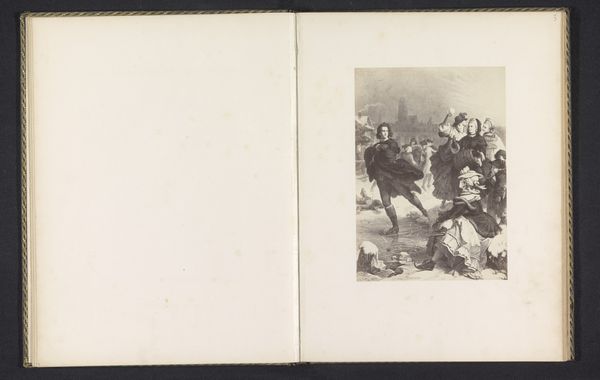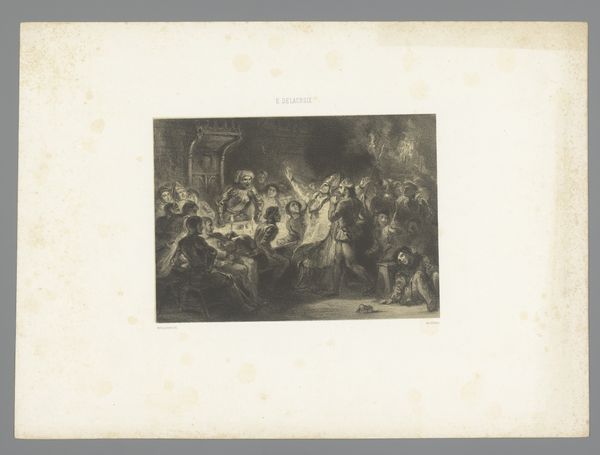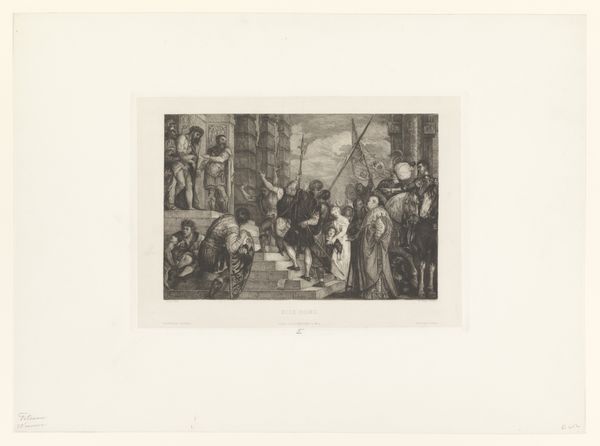
drawing, print, etching, paper, engraving
#
drawing
#
narrative-art
# print
#
etching
#
paper
#
history-painting
#
academic-art
#
engraving
#
monochrome
Dimensions: height 157 mm, width 238 mm
Copyright: Rijks Museum: Open Domain
Curator: Standing before us is a monochrome print by Edgar Alfred Baes created around 1872, titled "Maria van Bourgondië opgebaard in Brugge," depicting the lying-in-state of Mary of Burgundy in Bruges. Editor: My initial feeling is one of intense, muted grief. The greyscale gives it this hushed, almost spectral quality. You can feel the heavy, sorrowful atmosphere hanging over the scene. Curator: Absolutely. Baes really captures the solemnity of the event. Look at how the composition directs our eye—the dark robes of the clergy contrasted against the white cloth draped over Maria's coffin. Even in this scaled-down print, the emotion comes through vividly. It’s essentially a historical narrative piece. Editor: It's all about symbols, isn't it? Those towering hats of the clergy—miter—are symbols of authority but are more like antennas reaching to other worlds here. It says so much about power, ritual, and the psychological need to give meaning to such events. The cloth draped with a heraldic shield gives this meaning to who has died. This heraldic shield represents her lineage, her status and, to her people, continuity. Curator: I see exactly what you mean. Heraldry became integral to these displays—the symbols themselves acting as stand-ins for the individual, assuring continued remembrance and, arguably, solidifying dynastic claims in that intensely turbulent period. But look at how intimate he makes this historical spectacle. Notice the figure weeping in the lower right corner. Editor: Precisely! Even the placement of those candles—they act as watchful eyes, eternal flames guiding her soul, and perhaps, just perhaps, warding off some encroaching darkness, be it literal or metaphorical. Death rites were really important, marking boundaries between life and beyond. Curator: Baes manages to capture both that monumental scale of history and these quiet, intimate moments of grief. In terms of process and method, it shows his deep knowledge of both history and etching, creating a tangible echo of a historical event, bridging that gap. Editor: For me, it underlines how grief and loss echo down through history—a constant hum beneath the surface of grand narratives. Curator: Well said. It really gives us pause, doesn’t it? It prompts us to consider how such events shape our perceptions and our relationship with memory. Editor: Indeed. It's like history whispering, a reminder that even in grandeur, there's profound, intimate human experience woven into the tapestry.
Comments
No comments
Be the first to comment and join the conversation on the ultimate creative platform.
